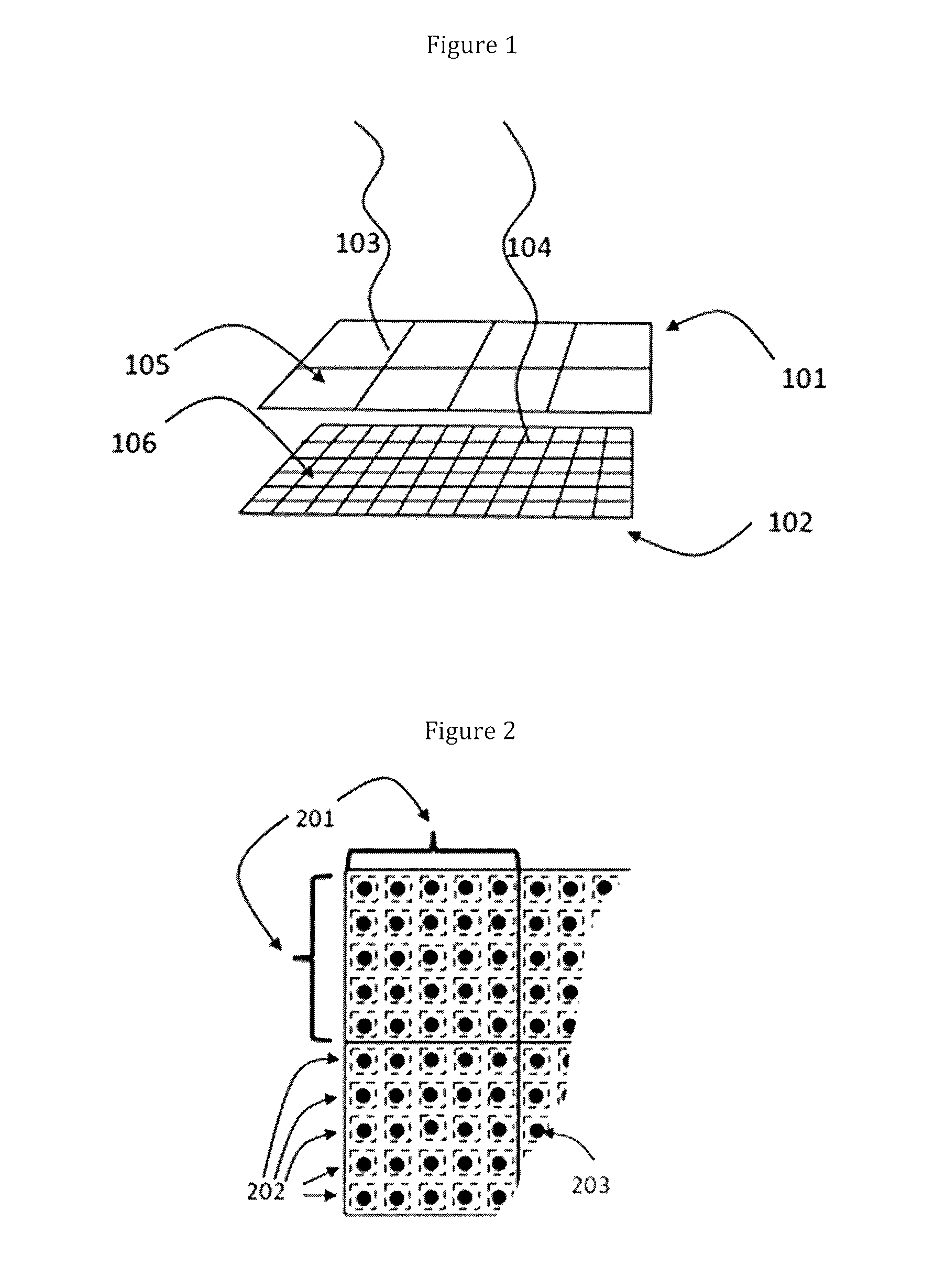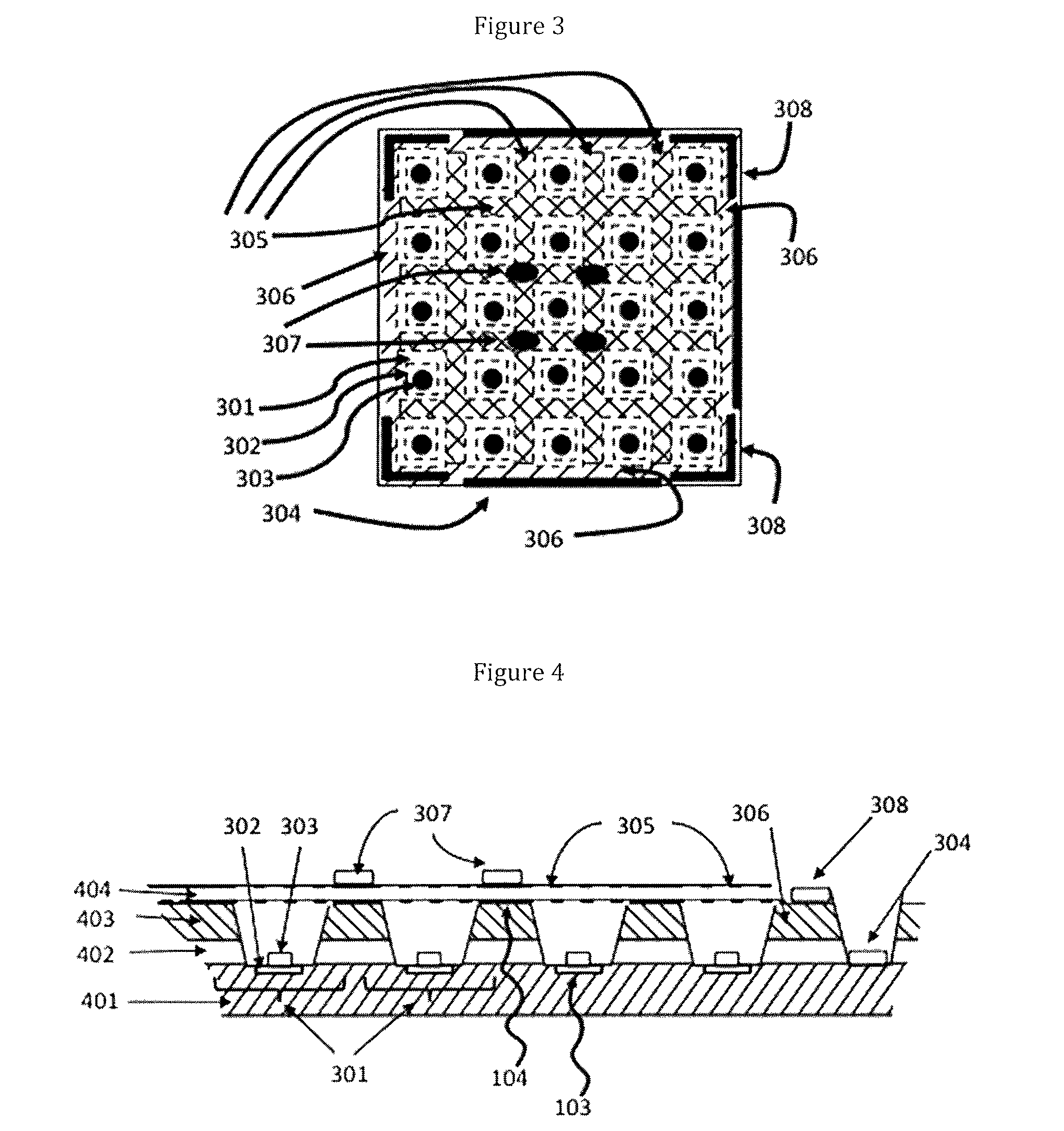Dual pixel pitch imaging array with extended dynamic range
a dynamic range and imaging array technology, applied in the field of dual pixel pitch imaging arrays, can solve the problems of no detector technology, complex sensor design, and added complexity to the external chip control electronics and the camera mechanical housing, and achieve the effect of expanding the dynamic range of the focal plane imaging array
- Summary
- Abstract
- Description
- Claims
- Application Information
AI Technical Summary
Benefits of technology
Problems solved by technology
Method used
Image
Examples
case 1
[0131]In the preferred implementation described above, the present invention uses six clock signals and four logical bits to indicate the gain state, as indicated in FIGS. 12 and 15. In alternate implementations, fewer clock signals and fewer gain state bits may be desirable. Practical cases of interest include:[0132] Dual fixed clock signals, one fast for large pixels and one slow for small pixels; and[0133]Case 2: Dual clock signals with one small pixel clock variation so that only φS1, φS2, and φL1 as shown in FIG. 12 are used.
While not offering the full range of operation of the preferred implementation, each of these practical implementations still offers advantages over current focal plane arrays.
[0134]For case 1, the dual array can be operated so as to offset the responsivity range of the large and small pixels, resulting in a large dynamic range through their combined operation. As a specific example, 80 micron large pixels with an electronic gain of 20 nV / electron, an integ...
PUM
 Login to View More
Login to View More Abstract
Description
Claims
Application Information
 Login to View More
Login to View More - R&D
- Intellectual Property
- Life Sciences
- Materials
- Tech Scout
- Unparalleled Data Quality
- Higher Quality Content
- 60% Fewer Hallucinations
Browse by: Latest US Patents, China's latest patents, Technical Efficacy Thesaurus, Application Domain, Technology Topic, Popular Technical Reports.
© 2025 PatSnap. All rights reserved.Legal|Privacy policy|Modern Slavery Act Transparency Statement|Sitemap|About US| Contact US: help@patsnap.com



